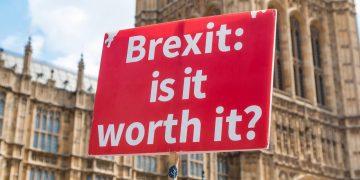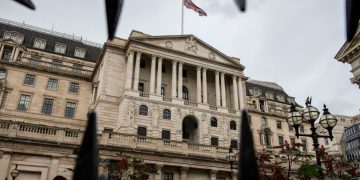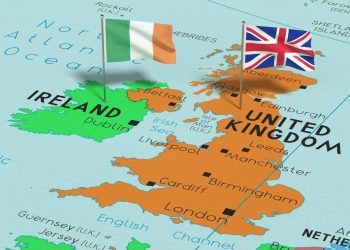In the Republic of Ireland (Southern Ireland), liberal democrats have faced a decrease in popularity against nationalists. Support for Fine Gael is at its lowest level since 1994, while support for Sinn Fein is at a record high. As the cost of living crisis mounts, support for Southern Ireland’s Liberal Coalition (Fine Gael and Fianna Fáil) has declined. According to the latest Irish Times poll, support for the Coalition has fallen as the cost of living rises. Regarding Fianna Fail vs Sinn Fein, the poll showed that support for Fianna Fáil has decreased since April. Fine Gael also fell 4 points to its lowest level of popularity since 1994.
Fianna Fail vs Sinn Fein: Sinn Fein overtakes in the poll
According to the Irish Sun, support for the coalition Government has sunk to its lowest level in almost 30 years. New poll results show this. Support for Fine Gael has dropped to the lowest level since 1994. Support for the party fell in the polls to 18 percent. And support for Fianna Fáil slipped to 20 percent. Meanwhile, confidence in Sinn Fein has increased. Support for the party stands at 36 percent, its highest level on record.
Fianna Fáil
Fianna Fáil is one of the two main political parties in the Republic of Ireland, established in 1926. It has been the government party in Ireland for most of the time since then. According to Britannica, Fianna Fáil has been the dominant political party in the Republic of Ireland since the 1930s. Constituted in May 1926, Fianna Fáil comprised opponents of the Anglo-Irish Treaty (1921). The treaty brought the Irish Free State into existence.
As Spunout says, after the Irish War of Independence, the leaders of the independence movement signed an agreement with Britain. They called the deal “the Anglo-Irish Treaty”. The treaty would allow Ireland to form its government. However, Ireland remains a part of the British Empire with the British King as the head of state. Those who supported this agreement would become Fine Gael. And those who wanted to continue the fight to remove Ireland entirely from the British Empire formed Fianna Fáil. Though Ireland eventually did become a Republic in 1949, the two parties continue to exist.
Sinn Féin
According to Britannica, Sinn Féin was long widely regarded as the political wing of the IRA. It is active in Northern Ireland and the Republic of Ireland. Sinn Féin strives for an end to the political partition of the island of Ireland. It expresses an ideology that is variously characterized as nationalism and Republicanism.
As Spunout says, the modern Sinn Féin party came into existence in 1970. It was initially primarily active in Northern Ireland. The party was closely linked with the Provisional IRA. It believed in uniting Northern Ireland and the Republic through a mix of violence and political activism. In the 1990s, Sinn Féin ended its support for violence and joined the new Northern Irish Executive (Government). The Executive was the result of the Good Friday Agreement of 199. Since then, Sinn Féin has become the second-largest party in Northern Ireland. It has also grown in popularity in the Republic.
Fine Gael
Fine Gael is one of the two main political parties in the Republic of Ireland, established in 1933. Britannica says that Fine Gael is the centrist party that has given significant political opposition to the Fianna Fáil. Spun says that after the Irish War of Independence, the leaders of the independence movement signed “the Anglo-Irish Treaty”. As mentioned above, the treaty would allow Ireland to form its government. However, it would remain a part of the British Empire with the British King as the head of state. Those who supported this agreement would become Fine Gael.
Fianna Fail vs Sinn Fein: Fianna Fail rules out Coalition with Sinn Fein
Concerning Fianna Fail vs Sinn Fein, an important issue is the Coalition of the two parties. The Guardian (13 Feb 2020) states: Fianna Fáil says it will not consider going into government with Sinn Féin. This decision will likely prevent left-wing nationalists from entering power for the first time. Sinn Féin shocked the Irish establishment by securing the most votes in a national election in Feb 2020. Its vote almost doubled to 24%.
Similarly, Reuters (13 Feb 2020) says Ireland’s largest party Fianna Fail will not consider going into government with Sinn Fein. The decision will likely prevent left-wing nationalists from entering power for the first time.
Final remark
The latest polls show a decrease in the popularity of Fianna Fail vs Sinn Fein. According to Irish Examiner (Sun, 29 May 2022), Sinn Féin has achieved its highest level of popular support. It holds a commanding lead over the two other main parties. There is a rising public concern about the housing crisis. In this situation, Sinn Féin, on 36%, is now more popular than Fine Gael (20%) and Fianna Fail (15%) combined.
The Irish Times (14 Jul 2022) says the Irish Times poll shows support for Fine Gael at the lowest level since 1994. But Sinn Féin hits record high. Support for Coalition slumps as the cost-of-living crisis squeezes voters.
To sum up, Fine Gael and Fianna Fáil have long avoided Sinn Féin. They have emphasized policy differences and the party’s historical links to the IRA (the Guardian, Thu 13 Feb 2020). However, Now, Sinn Féin, with its policies and links to IRA, has become the most popular party in Ireland. This popularity shows that Irish people favour Sinn Féin’s policies, including the integration of northern Ireland and the Republic of Ireland.





























